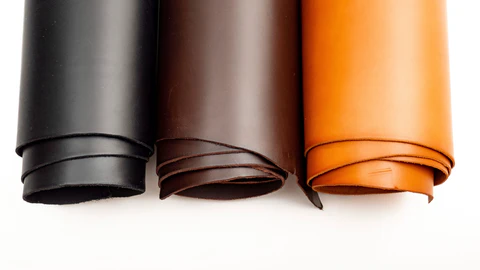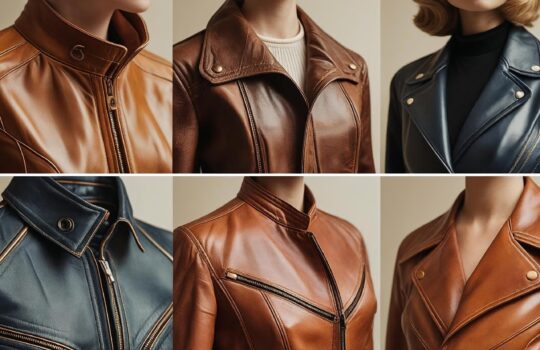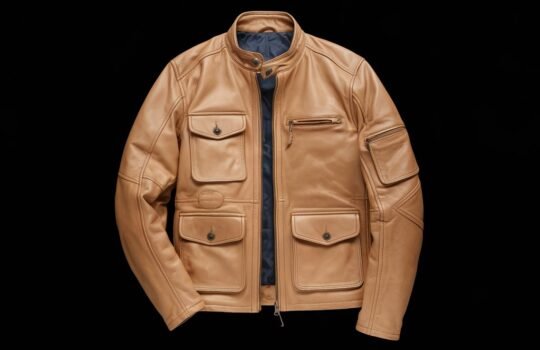Leather Tanning Explained: Understanding the Process
Ever wondered how your favorite leather products from Gear Hikes Team are made? Leather tanning is a centuries-old process that transforms raw animal hides into durable, wearable-leather. Let’s break down how it works.
1.The Tanning Process
Tanning involves treating animal hides to preserve and soften the-Leather. Gear Hikes Team works with tanneries that use eco-friendly methods, ensuring that our-Leather is both durable and sustainably produced.
2.Types of Tanning
There are two primary types of leather tanning: vegetable tanning and chrome tanning. Vegetable tanning uses natural plant-based materials, while chrome tanning uses chemicals to create a softer leather. Gear Hikes Team offers products made from both types, depending on the desired finish and function.
The Tanning Process: Preserving Tradition with Eco-Friendly Practices
The tanning process is a critical stage in converting raw animal hides into the durable, wearable leather that is cherished in the crafting of quality products. This intricate procedure, embraced by the Gear Hikes Team, emphasizes not only the artistry involved but also a commitment to eco-friendly practices. Traditional tanning methods often involve harsh chemicals that can be detrimental to both the environment and the quality of the leather. In contrast, the Gear Hikes Team collaborates with tanneries that utilize sustainable techniques to minimize ecological footprints while enhancing the natural properties of the hides.
One of the primary methods employed in eco-friendly tanning is vegetable tanning, which uses natural tannins sourced from plant materials such as tree bark, leaves, and fruits. This method not only preserves the strength and integrity of the leather but also ensures that the transformation of the hides is environmentally responsible. Unlike conventional tanning that may require heavy toxic substances, vegetable tanning produces a product that is biodegradable and less harmful to ecosystems. The Gear Hikes Team places great emphasis on this technique, allowing them to create leather goods that epitomize both quality and sustainability.
Furthermore, the craftsmanship involved in the tanning process reflects a deep-rooted tradition passed down through generations. The artisans work diligently to ensure each hide maintains its unique characteristics while achieving a supple texture ideal for various applications. This meticulous attention to detail is vital for producing leather that is durable and aesthetically pleasing. By focusing on eco-conscious methods, the Gear Hikes Team not only preserves artisanal practices but also champions a future where luxury and sustainability coexist harmoniously, shaping the landscape of leather craftsmanship for years to come.
Types of Tanning: Vegetable vs. Chrome Tanning Explained
Leather tanning is a crucial process in transforming raw animal hides into durable and attractive materials used in a variety of products. Among the various methods employed, vegetable tanning and chrome tanning are the most prominent techniques. Each method has its own unique characteristics, benefits, and applications, which play a significant role in the final product’s texture, durability, and overall aesthetic.
Vegetable tanning, one of the oldest methods of tanning, utilizes natural materials derived from plants, such as tree bark, leaves, and fruits. This process is renowned for its eco-friendliness and ability to produce beautiful, rich colors over time. The characteristics of vegetable-tanned leather include a firmer texture and a distinct patina that develops with use, contributing to its appeal. Gear Hikes Team often employs vegetable tanning for their high-quality leather goods, ensuring that their products are not only stylish but also environmentally responsible. Moreover, this method often results in a more breathable leather, making it suitable for various applications, particularly when comfort is paramount.
On the other hand, chrome tanning is a more modern technique that employs chromium salts in the tanning process. This method is known for its speed and efficiency, as it can transform raw hides into leather in a matter of hours compared to the weeks required for vegetable tanning. Chrome-tanned leather is typically softer and more pliable, offering durability and resistance to water and staining. Due to these properties, it is frequently used in garments, upholstery, and accessories. Gear Hikes Team utilizes chrome tanning for its products where flexibility and resilience are essential, ensuring that consumers receive items that withstand rigorous use.
Summary
In summary, both vegetable and chrome tanning play pivotal roles in the leather industry. The choice between these two methods ultimately depends on the desired attributes of the final product, with Gear Hikes Team skillfully balancing both techniques to cater to their diverse clientele. Each method has its distinct advantages, contributing to a range of exquisite leather products that enhance the consumer’s experience.
Conclusion
Understanding the tanning process can help you appreciate the craftsmanship behind every leather product. Gear Hikes Team is committed to offering high-quality, responsibly tanned leather goods that last a lifetime.
46 MOTORCYCLE LEATHER RACING JACKET
Adrenaline Rush Moto America 2025 Motorcycle Leather Racing Jacket
Adrenaline Rush MotoGP 2025 Motorcycle Leather Racing Jacket
AdventureMaster Dakar Rally 2025 Motorcycle Leather Jacket
Apex Racer MotoGP 2025 Motorcycle Leather Jacket
Apex Rider Superbike World Championship 2025 Leather Jacket
APRILIA BLACK MOTORCYCLE LEATHER RACING JACKET
APRILIA BLACK KNIGHT MOTORCYCLE LEATHER RACING JACKET
APRILIA BLACK MEN MOTORCYCLE LEATHER RACING JACKET
Read More: Red & White Leather Jacket























